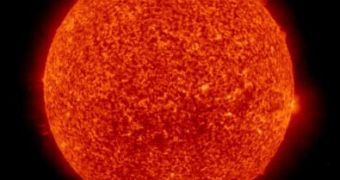While being the most massive object in the solar system, the Sun may also hide one of the biggest mysteries in the solar system. The Sun is an average-sized main sequence star about 5 billion years old, currently in its mid-life, with a surface temperature approximated at about 6,000 degrees Celsius. Much of the light coming from the Sun is actually not emitted by the surface, but by the Corona, its outer gaseous layer dominated by powerful magnetic fields.
Something extremely strange is taking place within the Sun's Corona. While the surface temperature reaches only 6,000 degrees, the Corona can experience more than 1,8 million degrees Celsius, 200 to 300 times hotter. This particular observation has been subject of great debate during the last few decades, strongly questioning our capabilities of predicting solar weather and the knowledge behind the nuclear fusion reactors.
In an eager attempt to solve the mystery, American astrophysicists proposed that the super-heated Corona is generated by interactions with high-energy Alf?n waves, and claimed to have detected these waves in the high atmosphere of the Sun. Alfv?n waves have a corkscrew motion along the magnetic fields occurring in the Corona, while exceeding supersonic velocities.
But, skeptics think otherwise. In a study previously proposed by researchers from the University of Warwick, they have revealed that the Corona contains magneto-acoustic Kink waves, a type of complex magnetic fields that usually occur in the outer layers of the Sun.
Dr. Tom Van Doorsselaere, one of the participants in the study conducted by the University of Warwick, argues that the mistake made by the American team is understandable, however the data clearly shows that there are certain differences between Alfv?n waves and Kink waves. Although they think that they are viewing Alfv?n waves, they are in fact observing Kink waves.
Doorsselaere describes Kink waves as a slight bend in the magnetic field of the Sun, such as those of a stressed string. This means that the study conducted by the Boulder Colorado last year has no validity, thus all calculations are wrong and astrophysicists still have no idea what makes the Sun's Corona such a hot structure.

 14 DAY TRIAL //
14 DAY TRIAL //